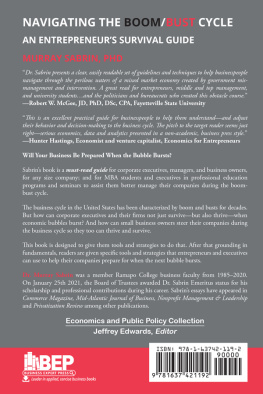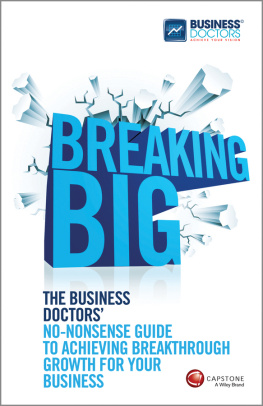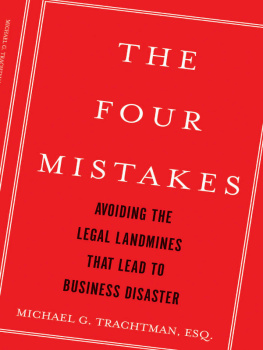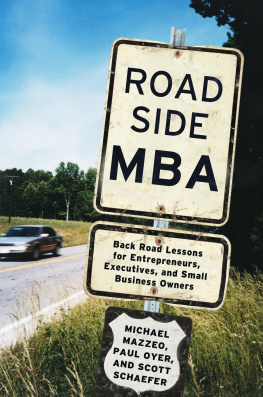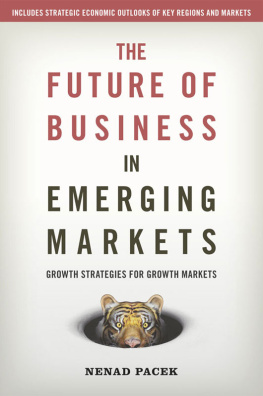Table of Contents
Guide

Navigating the Boom/Bust Cycle
Navigating the Boom/Bust Cycle
An Entrepreneurs Survival Guide
Murray Sabrin

Navigating the Boom/Bust Cycle: An Entrepreneurs Survival Guide
Copyright Business Expert Press, LLC, 2022.
Cover design by Charlene Kronstedt
Interior design by Exeter Premedia Services Private Ltd., Chennai, India
All rights reserved. No part of this publication may be reproduced, stored in a retrieval system, or transmitted in any form or by any meanselectronic, mechanical, photocopy, recording, or any other except for brief quotations, not to exceed 400 words, without the prior permission of the publisher.
First published in 2021 by
Business Expert Press, LLC
222 East 46th Street, New York, NY 10017
www.businessexpertpress.com
ISBN-13: 978-1-63742-119-2 (paperback)
ISBN-13: 978-1-63742-120-8 (e-book)
Business Expert Press Economics and Public Policy Collection
Collection ISSN: 2163-761X (print)
Collection ISSN: 2163-7628 (electronic)
First edition: 2021
10 9 8 7 6 5 4 3 2 1
To Americas men and women who have invented, innovated, and created,
providing the prosperity we have today.
Description
The audience for this book is corporate executives, managers, and business owners, for any size company; and for MBA students and executives in professional education programs and seminars to assist them better manage their companies during the boom-bust cycle.
The business cycle in the United States has been characterized by an ongoing series of economic booms and busts, bubbles and burstsdespite efforts by the Federal Reserve (the Fed) to stabilize the ups and downs. But how can corporate executives and their firms not just survivebut also thrivewhen economic bubbles burst? And how can small business owners steer their companies during the business cycle so they too can thrive and survive?
This book is designed to give them tools and strategies to do that. And you will learn how to pinpoint the peaks and troughs of the boom-bust cycle to grow your business and to avoid the painful consequences of future economic downturns.
Readers will first learn what the strengths, weaknesses, opportunities, and threats of our market economy for business are; the role played by innovation, capital formation, and entrepreneurship; and the fundamentals of the boom-bust cyclical economy from the perspectives of different leading economic theories.
After that grounding in fundamentals, I will show specific tools and strategies executives can use to help their companies prosper in the boom-bust cycle.
Keywords
market economy; mixed economy; the boom-bust cycle; financial bubbles; business strategy; business planning; The Federal Reserve
Contents
Dr. Sabrin presents a clear, easily readable set of guidelines and techniques to help businesspeople navigate through the perilous waters of a mixed market economy created by government mismanagement and intervention. A great read for entrepreneurs, middle and top management, and university students and the politicians and bureaucrats who created this obstacle course.Robert W. McGee, JD, PhD, DSc, CPA, Fayetteville State University
This is an excellent practical guide for businesspeople to help them understandand adjust their behavior and decision making tothe business cycle. The pitch to the target reader seems just rightserious economics, data and analytics presented in a non-academic, business press style.Hunter Hastings, Economist and venture capitalist, Economics for Entrepreneurs, Hunterhastings.com
The complexities of todays business climate keep growing. Operating a successful business requires time, resources, knowledge, and skills. This book is a must-have tool in every business toolkit. The insights, techniques, and knowledge Dr. Sabrin shares in this book will help businesses grow and set them on a sustainable path to success.Anthony Russo, President Commerce and Industry Association of New Jersey, CEO/ PublisherCOMMERCE Magazine
Dr. Sabrin, in his Navigating the Boom-Bust Cycle: An Entrepreneurs Survival Guide, brings new brilliance to the timeless Chinese saying, It is better to light one candle than curse the darkness. He, on these pages, has lit hundreds of candles to illuminate every corner of entrepreneurship and economics. No longer will the reader need to stumble through the shadowy future. Every ray of understanding, here in, is at your fingertips. Enjoy and prosper.Dwight Carey, Serial entrepreneur for over 60 years involved with over 200 start-ups. Professor of Entrepreneurship and Engineering, Temple University.
I would like to thank Paul Mladjenovic who recommended me to Business Experts Press acquisition editor Ed Stone. Ed helped make this book possible in so many ways. I cannot thank him enough for his assistance and professionalism. Hunter Hastings, economist and venture capitalist, provided invaluable suggestions that improved the manuscript. Also, economist Tom DiLorenzos suggestions were much appreciated, as were business professor Robert McGees comments. Also I would like to thank Charlene Kronstedt for guiding the manuscript through the production process and the team at Exeter for their editorial assistance, which helped shape the manuscript for publication.
I wrote this book to provide a road map for corporate managers and small-business owners to understand how the business cycle affects not only the general economy but also their companies no matter in what sector their businesses operate, and how to prepare for the inevitable downturns in the economy. As we shall see, recessions are unfortunately inevitable in our mixed economy, where the Federal Reserve has taken on the responsibility to manage the economy to provide high employment and low inflation by targeting short-term interest rates. We will examine the Federal Reserves track record, and readers can reach their own conclusions about the Feds policies.
When the economy is boomingor at least expanding at a moderate rateand prosperity seems limitless, a recession seemingly comes out of nowhere. Many (most?) business decision makers are caught completely off guard as economy rolls over. Why have experienced corporate managers and entrepreneurs failed to recognize the signs that a recession is unfolding? Navigating the Boom-Bust Cycle: An Entrepreneurs Survival Guide therefore fulfills a much-needed void, a guide for business decision makers to get ahead of the curve as the business cycle unfolds. In short, my book gives business decision makers a leg up on their competition.
The business cycle in the United States has been characterized by an ongoing series of economic booms and busts, bubbles and burstsdespite efforts by the Federal Reserve to stabilize the ups and downs since it was created in 1913. Since then, the U.S. economy had the forgotten depression of the early 1920s, followed by the Roaring Twenties, and then the more than decade-long Great Depression. After the seemingly endless postWorld War II prosperity that lasted for nearly three decades, many companies were unprepared for the 1970s stagflation. The boom of the 1980s continued into the 1990s, and, as we shall see, paved the way for dot-com bubble, the housing bubble, and now what some analysts have called the everything bubble.
When will the everything bubble burst? How can corporate executives and their firms not just survivebut also thrivewhen the next and future economic bubbles burst? And what should small business owners do during the good times to prepare for a downturn in the economy to avoid a possible threat to their survival? This book is designed to give you tools and provide the strategies to do that by pinpointing when the good economic times will give way to the next downturn that could be as severeor worseas the housing bubble burst, or as relatively mild as the bursting of the dot-com bubble. No matter what is in store for the economy, you will be prepared to weather the economic storm.

